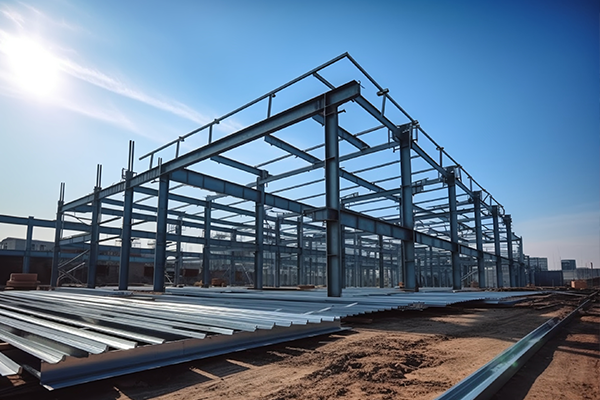NewsDetails
The "sandwich" composite structure principle of rock wool sandwich panel: a building armor that combines rigidity and flexibility
author:Tianxing time:2025-06-04 11:19:12 Click:167
1、 Structural anatomy: a clear three-layer collaborative system
Rigid Shield - Metal Surface Layer:
Bending and compression resistance: Provides the main bending and compression bearing capacity, resisting wind loads, snow loads, and construction loads.
Protective barrier: Resist external environmental erosion (wind, rain, ultraviolet radiation, corrosion), mechanical impact and wear.
Aesthetic decoration: The color coated surface layer provides diverse colors and textures to meet the aesthetic needs of architecture.
Stress transmission: effectively transmitting and distributing external loads.
Role: Undertaking the core of structural strength and external protection.
Material: High strength galvanized steel plate, aluminum zinc coated steel plate or color coated steel plate are usually used.
Function:
The core of flexibility - rock wool core material:
Thermal insulation (based on actual reports): Its large number of tiny pores inside effectively lock in air, forming a high thermal resistance layer and significantly reducing heat transfer (low thermal conductivity).
Fireproof and flame retardant: Inorganic mineral materials endow its main product with non flammability, making it a passive fire barrier.
Sound absorption and insulation: The porous fiber structure can effectively absorb and dissipate sound wave energy, reducing noise propagation.
Stable support: tightly filled between two layers of panels to prevent panel buckling and instability, and provide determined shear resistance. Its density and thickness directly affect the stiffness and thermal insulation performance of the overall board.
Hydrophobic and moisture-proof (based on actual reports): Excellent rock wool has good hydrophobicity, resists water vapor penetration, and maintains long-term stable performance.
Role: Responsible for functionality and internal support.
Material: Made mainly from naturally growing minerals such as basalt, which are melted at high temperatures, centrifuged into fibers, and solidified into shapes.
Function:
Bridge of Connection - High Strength Adhesive:
Strong bonding: firmly bond the metal panel and rock wool core material into a whole, confirming that there is no delamination or layering under load.
Stress transmission: Effectively transmitting shear stress between the panel and the core material, enabling them to work together.
Fill gaps: Fill in any small gaps that may exist to enhance overall airtightness.
Long term stability: It has good weather resistance, temperature resistance, and aging performance, protecting long-term bonding strength.
Role: The key link to structural integrity.
Material: Usually stable performance polyurethane (PU) or modified phenolic resin (PF).
Function:
2、 Synergy and Efficiency Enhancement: The Mechanical Mystery of 1+1+1>3
The essence of the "sandwich" structure lies in the composite effect, which realizes the advantages and disadvantages of each layer's material properties by leveraging their strengths and avoiding their weaknesses
Significantly improve bending stiffness (strength to weight ratio):
Principle: According to the "I-beam principle" (also known as the "sandwich beam principle") in material mechanics. The bending stiffness is proportional to the square of the distance from the material to the neutral axis.
Implementation: A metal panel with high strength but relatively high density is placed on the outermost layer away from the neutral axis (i.e. the middle of the thickness direction of the plate), like the flange of an I-beam, to withstand large tensile and compressive stresses. A lightweight rock wool core material with a determined compressive strength is filled in the middle, similar to the web plate of an I-beam, which mainly bears shear stress and supports the two layers of panels, significantly increasing the distance between the panels (i.e. increasing the moment of inertia of the section).
Effect: In the case where the total weight of the board does not increase significantly, its overall bending stiffness (ability to resist deformation) and load-bearing capacity are greatly improved by geometric progression compared to a single metal board or pure rock wool board. The core advantage of "lightweight and high-strength" has been achieved.
Functional integration and complementary performance:
The metal surface layer compensates for the shortcomings of rock wool core material, such as insufficient tensile/compressive strength, susceptibility to mechanical damage, and the need for external protection.
Rock wool core material makes up for the shortcomings of poor thermal insulation (based on actual reports), weak sound insulation performance, and low fire rating of metal panels, and provides internal support for the core.
The adhesive confirms that this complementarity and integration can play a stable, excellent, and long-term role.
Stability enhancement:
The core material tightly supports the two layers of panels, effectively preventing local buckling (wrinkling, bulging) of thin-walled metal panels under pressure and improving overall stability.
3、 Structural Password: Key Design Parameters that Affect Performance
Panel thickness and strength: directly determine the load-bearing capacity (bending and compression resistance) and performance stability of the board. Increasing the thickness or using higher strength steel can improve the bearing capacity.
Density of rock wool core material: Density is the core parameter. Low density, soft core material, weak shear resistance, and poor support can easily lead to panel debonding or local instability; High density may increase weight and cost, resulting in a slight decrease in insulation performance (but still better than low density). It is necessary to find the optimal balance between mechanical properties (shear resistance, support) and thermal insulation and sound insulation performance.
The thickness of rock wool core material directly affects the insulation performance (based on actual reports) (the thicker the thickness, the greater the thermal resistance), sound insulation performance, and overall bending stiffness of the board (as the thickness increases, the panel spacing increases, and the moment of inertia significantly increases).
Adhesive performance and coating amount: The adhesive strength, weather resistance, temperature resistance, and uniform and sufficient coating of the adhesive are the basis for protecting the long-term integrity and collaborative working ability of the composite structure. Adhesive failure is one of the most fatal failure modes of sandwich panels.
Forming method (plate type): The metal panel is pressed into different waveforms (such as V-shaped, U-shaped, hidden connection type, etc.), which can further enhance the stiffness of the panel itself and the synergistic effect with the core material, optimizing the connection performance.
Conclusion: The power of technology creates results
The sandwich structure of rock wool sandwich panels is a profound understanding and clever application of natural mechanics principles by material engineers. It is not just about sticking three materials together, but through meticulous design and strict process control, it forms an organic (based on actual reports) and collaborative whole of rigid metal, flexible rock wool, and strong adhesive. This composite structure principle is the fundamental reason why rock wool sandwich panels can carry thousands of tons with a lightweight body, isolate the noise of cold and heat with a thin body, and safeguard building safety in a stable state. Only by understanding this principle can we have a deeper understanding of its performance boundaries, and in architectural design, we can fully leverage its advantages to build a truly safe, effective, and comfortable enclosure barrier.
 Recommended Products
Recommended Products
 Contact us
Contact us
—— Contact:Ms. Zhang
—— Tel:(+86)18399688883
—— Email:18399688883@163.com
—— Url:https://www.tianxingmaterials.com
—— Address:Horgos City, Ili Kazakh Autonomous Prefecture, Xinjiang, China







